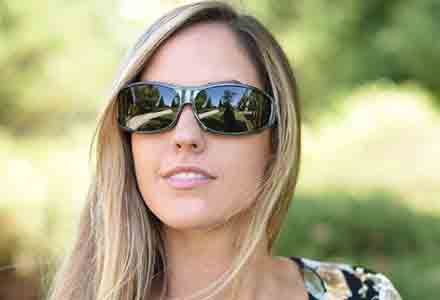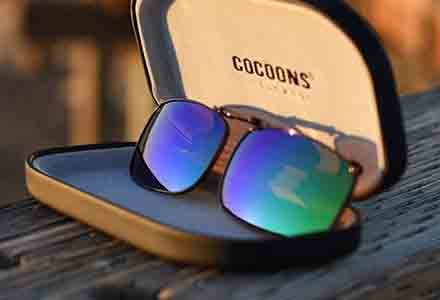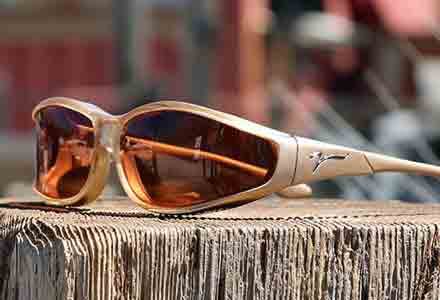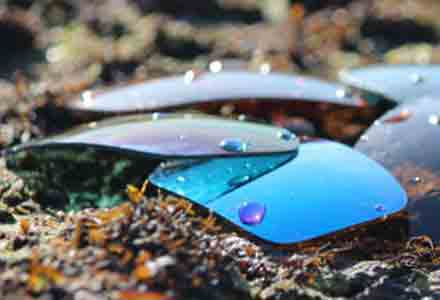Cocoons Fitovers, Eye Health, Visual Performance
Forming Focus: The Quiet Eye
Down just one run, our hero coils up at the plate with a man on third and a full count on his back. Or maybe she walks up to the free throw line, the remaining seconds left stilled, blaring in the scoreboard. Or maybe he’s counting his steps back from a little orange tee at the 45 yard line.
It is a charged, downright cinematic moment, and to be sure, it’s a moment that’s been depicted in cinema hundreds of times over. We’ve all seen it: the slowed close-up shot; the foaming roar of the crowd washing out; the stretches between camera shudders dragging, and the shudders themselves snapping deeper, with a softer edge. These aural signifiers serve to tell us that time is slowing down for our hero in this do-or-die moment—that the world almost falls away as they steep themselves in concentration.
Then: the crack of the bat, the whip of the net, the pop of cleat on ball—all the surrounding sound rushes back, and the moment itself seems to exhale as our hero scores the winning run, shot, field goal, what have you. Such signifiers in sound do a great job of portraying the “flow state” of quietude and concentration athletes can access in these high-pressure moments. However, according to a growing body of research, we’re starting to find that this space of heightened athletic concentration isn’t necessarily auditory in nature, but rather more visual.
Sound still does serve as an effective metaphor here, though, as researchers describe this facility of heightened focus as “the quiet eye.” A recent BBC article by David Robson describes the quiet eye as “a kind of enhanced visual perception that allows the athlete to eliminate any distractions as they plan their next move.” In other words, during these do-or-die moments, expert athletes are actually seeing what’s happening in a different, more effective way than non- or novice athletes.
Researchers like kinesiologist Joan Vickers and psychologist Dr. Sam Vine, pioneers in studying the quiet eye, have been looking at the connection between vision and motor function for decades between the two of them, and their findings have been fascinating. Vickers found, for example, that the expert golfer will be able to hold their gaze on an object for 62% longer than the novice. Such duration helps with visualization and mentally mapping one’s surroundings. In essence, the athlete’s eyes aren’t darting around, struggling to focus on every little thing (like the camera flashes, jumbotrons, folks spilling relish off their bratwurst, etc.); rather, in the flow state, the eye remains more restful, allowing the mind to react more efficiently to what is happening.
A good friend of mine coaches college baseball, and I asked him while I was researching if he knew anything about this line of thought, either by “the quiet eye” or another name. He was fascinated by the concept and told me how he instructs his batters (as he was instructed) not to zero in on the pitcher, but rather to kind of rest their eyes on a soft, still object just behind them. That way, when the pitcher winds up and releases, the ball appears in the batter’s field of vision, and they can more naturally observe the release and the ball as opposed to dragging their focused gaze from something else.
We have to place a strange amount of faith in our eyes in moments like these; we have to be able to trust that we’re seeing in split seconds—past what we can consciously comprehend. Researchers, expert athletes, and coaches seem to be implying, that is, that we have to allow our eyes to relax if we want to be able to move and react in the most effective ways.
And I’ve shared this here because I think it’s almost intuitive for the Cocoons wearer. Like with my baseball coach friend essentially honing players’ quiet eyes without necessarily knowing it, we often enact what we don’t yet have catchy names for. We’ve kind of been clued into this line of thought for a while now: whether we’re on the road, on the field, or on the trail, we know that taking care of our eyes, protecting them from glare and eyestrain, will ultimately allow us to remain more comfortable, relaxed, focused, and productive. When we allow our eyes to slow down and be comfortable, we reap benefits across the board.
And so I’m thinking it’s some combination of my new quiet eye practice and the comfort my Cocoons afford me, then, that I’m sitting at 3 for 3 shooting old crumpled up notes into the recycling bin. Either way, I’m craving a bratwurst, and I’m thinking I’ll quit while I’m ahead.






















